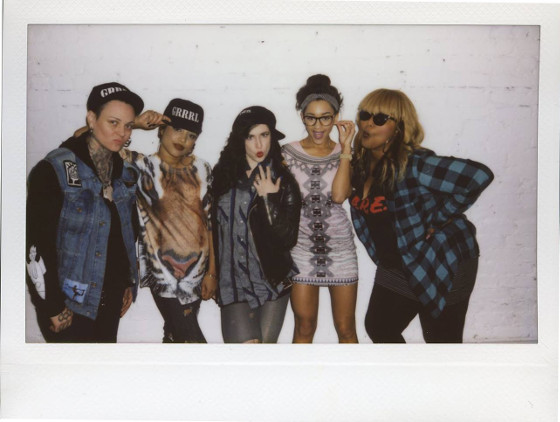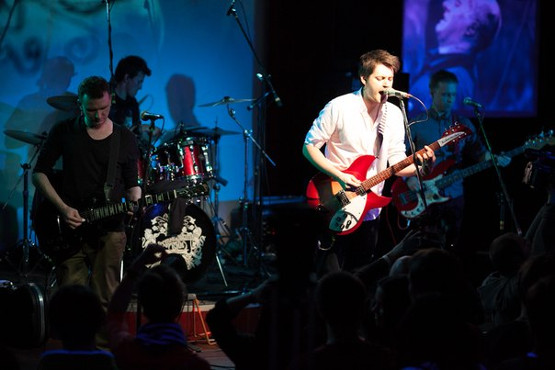
- 1 - We Walked Out Of Mexico Loaded
- 2 - Suspicion Breeds Confidence
- 3 - The Modern Beige
- 4 - Planetary Archive
- 5 - Limbic Crisis For Sparkle And Foam
- 6 - Nauplia
- 7 - ♇ Heart
- 8 - Margaritas By The Pool
- 9 - Aged Into Conformity
Ancient Race of Techno-Voyagers [Thee Koukouvaya]

- Release Date: 2016/08/08
- Label: Fiercely Independent Records
- Copyright ©: Brian Wenckebach and John O’Hara 2016
- Merch
- play.google.com
- storenvy.com
- itunes.apple.com
- bandcamp.com
- amazon.com
- amazon.de
- amazon.fr
- amazon.co.jp
- Reference
- crashingthroughpublicity.com
- routenote.com
- rippletunes.com
- muzoic.org
- spotify.com
- last.fm
- vimeo.com
- tidal.com
- themusic.today
- sloucher.org
- pennyblackmusic.co.uk
- fiercelyindie.co.uk
- davecromwellwrites.blogspot.com
- paperblog.com
- somewherecold.net
- discogs.com
- edm.me
This Is The Mythology Of Modern Death [Thee Koukouvaya]
Thee Koukouvaya released This Is The Mythology Of Modern Death on October 9, 2015:
[ indiessance ]
As a kid, I learned homekeys from a typewriting textbook. Then wrote some sci-fi shorts inspired by pulp fiction featured in Omni Magazine and Isaac Asimov's Science Fiction Magazine. One of my stories was published in the high school's literary magazine. The previous year, I wrote Don't Underestimate Sour Meat, which was shown to the editor, but may have been too controversial to publish.
What I did with story-scapes, the experimental electronic band Thee Koukouvaya does with soundscapes. Building environments with sonic elements for the imagination to discover and explore. Melodies, chords and sonic patterns resonating with quantum particles in carbon-based life forms. New soundscapes from Thee Koukouvaya's previous album titled This Is The Mythology Of Modern Death have been listed and described below by Brian of Thee Koukouvaya.
Thee Koukouvaya: This Is The Mythology Of Modern Death
The Magnetic State. Terra incognita, terra nullius, Ὑπερβόρειοι. A chill, a shiver: this is a land not of sightlines and landmarks but of the body and its responses. The first indications of success usually are a cold breeze passing over the hands. Victorian-era spiritualism was a domestic art, and the domestic sphere was the domain of woman. The belief, not unique to spiritualism, in the essential qualities of womanliness kept her shackled to the house, but it also opened a space for resistance, an authority and freedom of movement denied her by traditional expressions of spirituality. The clairvoyant claimed that magnetism was the source of her power, and in the magnetic state, she could communicate across vast distances. Meanwhile, a recent hypothesis claims that birds are able to follow identical migratory paths by interacting with the Earth's magnetic field: light strikes the bird's eye and splits apart entangled particles; if the polarized photon has a particular effect on these particles, the bird receives a stimulus that lets it know it is flying in the right direction. In effect, birds can see magnetic fields.
Anacaona. Resistance is not futile.
Chicago Warehouse Party, 1995. Went to lots of illegal raves in Chicago around 1994-95. One night the police, in full riot gear, busted up a party by charging at us from the freight elevator. They started clubbing people with nightsticks. Kids were getting dropped and cuffed and bloodied up. I escaped with my friends by climbing out the back window of the warehouse and racing down the fire escape.
Drunk Machine. The drinker does indeed find escape, he does indeed find a short respite and rest, but he returns from the illusion and finds everything as it was before.
40.207958, -74.041691. Fetal heartbeats juxtaposed with a nurses station. Coordinates identify the location.
Phantoms in the Last Age. The appearance of the spectral as symptom of catastrophe. Last as in previous, last as in final? Either way, the time is out of joint. Phantoms appear in order to issue warnings: things aren't supposed to be this way. As harbingers of this disjunction they transgress boundaries, move freely across planes, possess bodies. Despite this movement they are still not free, nor can they save us. They are irruptions of the past; they belong to the past. But it is often in the cracks and seams—where the joints come apart—where we might, in our peripheral vision, catch a glimmer of what it means to be free.
Prismatic Sun. The sky is a distant memory, as inexorably separated from us now as the past from the present. We see it now as through scales of fractured glass and never again as an unblemished dome of every hue of blue. The sun's golden light refracted, now a segmented wave, gleaming in all of its attendant colors. However apostate we may be in this world, there perforce we become apostles of the prismatic sun. And there is a voice. Are these the final plaintive gasps of a body subsumed by the prism, or the first words of a new being, bursting from this crystal case, one still without a language of its own?
A Life in a Portolan Chart. Modern cartography as a technology of control. In the period after ancient mappae mundi aestheticized geography but before longitude and latitude carved up the carcass of the sea, portolan charts recapitulated sailors' movements from safety to danger, their leaps between ports, thrusts into the unknown and back, the assembling of a body of knowledge. In place of the grid, rhumbline networks traced the movements of ships and the wind; drawn on a globe these lines would spiral away from magnetic north to its antipode. The era of the portolan chart was the last before cartography locked places into place.











